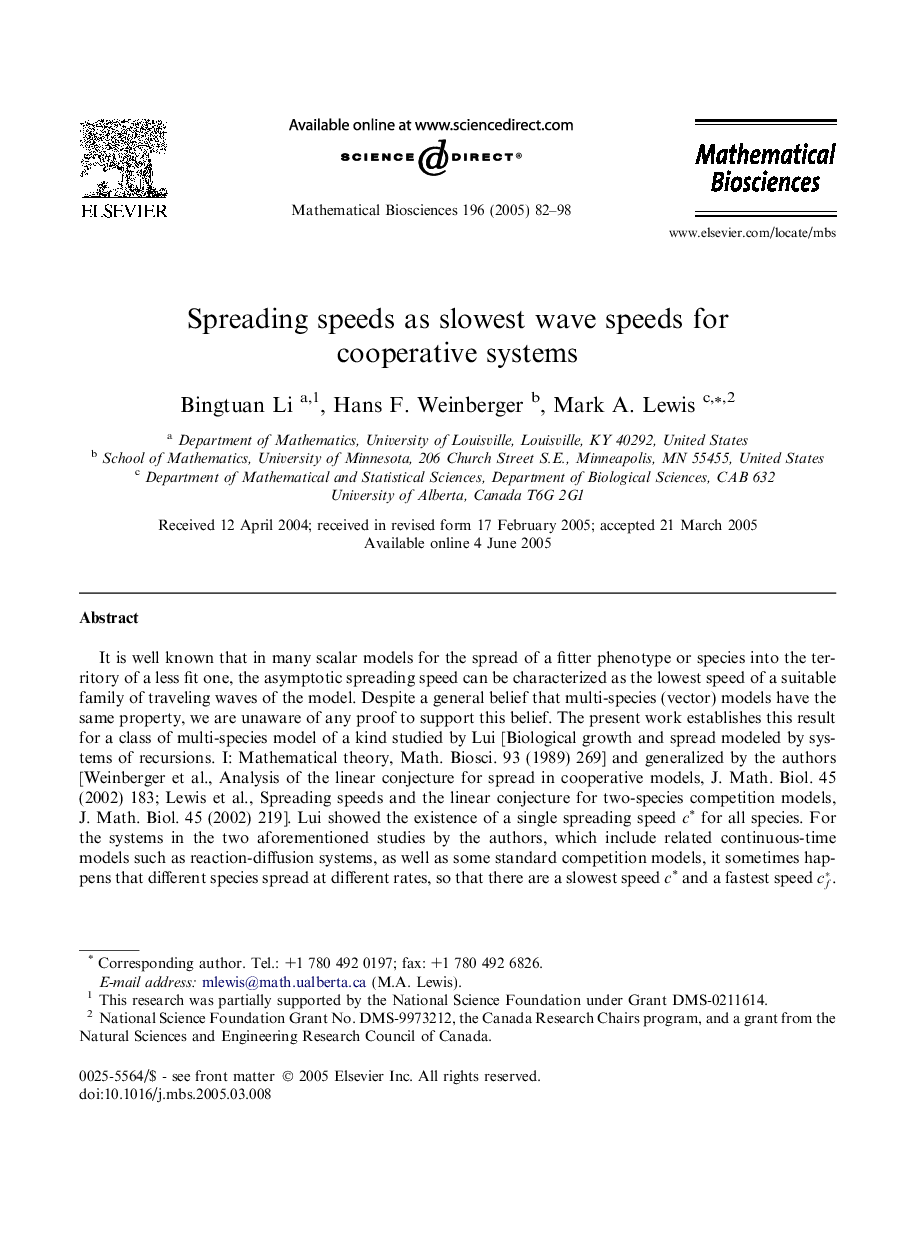| Article ID | Journal | Published Year | Pages | File Type |
|---|---|---|---|---|
| 9471078 | Mathematical Biosciences | 2005 | 17 Pages |
Abstract
It is well known that in many scalar models for the spread of a fitter phenotype or species into the territory of a less fit one, the asymptotic spreading speed can be characterized as the lowest speed of a suitable family of traveling waves of the model. Despite a general belief that multi-species (vector) models have the same property, we are unaware of any proof to support this belief. The present work establishes this result for a class of multi-species model of a kind studied by Lui [Biological growth and spread modeled by systems of recursions. I: Mathematical theory, Math. Biosci. 93 (1989) 269] and generalized by the authors [Weinberger et al., Analysis of the linear conjecture for spread in cooperative models, J. Math. Biol. 45 (2002) 183; Lewis et al., Spreading speeds and the linear conjecture for two-species competition models, J. Math. Biol. 45 (2002) 219]. Lui showed the existence of a single spreading speed câ for all species. For the systems in the two aforementioned studies by the authors, which include related continuous-time models such as reaction-diffusion systems, as well as some standard competition models, it sometimes happens that different species spread at different rates, so that there are a slowest speed câ and a fastest speed cfâ. It is shown here that, for a large class of such multi-species systems, the slowest spreading speed câ is always characterized as the slowest speed of a class of traveling wave solutions.
Keywords
Related Topics
Life Sciences
Agricultural and Biological Sciences
Agricultural and Biological Sciences (General)
Authors
Bingtuan Li, Hans F. Weinberger, Mark A. Lewis,
